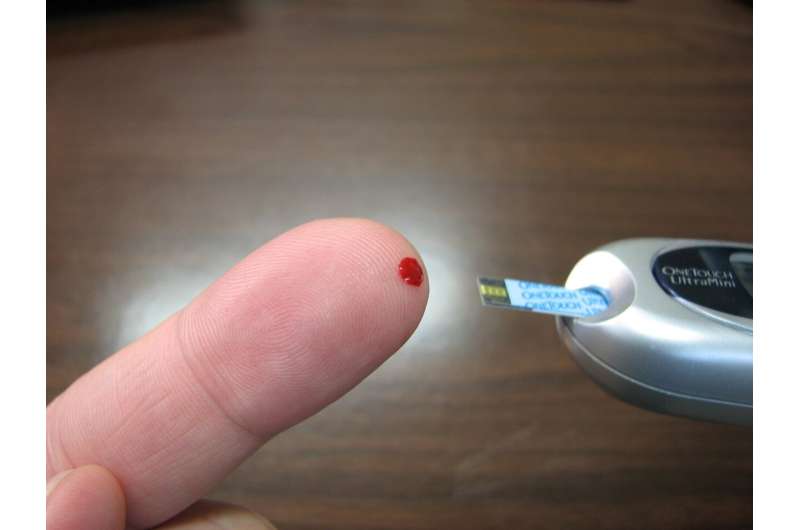This article has been reviewed according to Science X's editorial process and policies. Editors have highlighted the following attributes while ensuring the content's credibility:
fact-checked
trusted source
proofread
Adding AI to artificial pancreas enhances efficiency, study finds

Adding advanced artificial intelligence to an artificial pancreas regulating type 1 diabetes is safe and improves the system's efficiency, a first-of-its-kind study from the University of Virginia Center for Diabetes Technology has found.
In the study, UVA researchers compared an advanced experimental artificial pancreas system—which automatically monitors and regulates blood sugar for patients with type 1 diabetes—with an artificial pancreas algorithm that incorporated AI, described by the research team as a "Neural-Net Artificial Pancreas."
The AI-supported artificial pancreas kept participants' blood sugar in the target range for an almost identical amount of time as the advanced system while significantly reducing computational demands, the researchers found. The increased efficiency could allow the developers to implement the system in devices with low computational power, such as an insulin pump, they say.
"So far, this is the first clinical trial of a data-driven artificial pancreas system, which used an extensively trained neural network to deliver insulin automatically," said Boris Kovatchev, Ph.D., director of the UVA Center for Diabetes Technology.
Enhancing the artificial pancreas
Fifteen adult participants with type 1 diabetes participated in back-to-back testing sessions at a hotel, using both the advanced artificial pancreas and the AI-supported artificial pancreas for 20 hours and following their daily routines as closely as possible. The AI-supported artificial pancreas system kept participants' blood sugar in the target range 86% of the time, compared with 87% for the advanced artificial pancreas system.
The AI-supported artificial pancreas showed greatly improved efficiency, reducing computational demands six-fold.
The AI-supported artificial pancreas "is therefore more suitable for implementation in devices with low processing power, such as insulin pumps or pods," the researchers report.
Additional research is needed before the AI-supported artificial pancreas would be ready for use by patients. However, the UVA research team hopes that incorporating AI could allow the algorithm to adapt and improve based on data from thousands of users instead of just an individual, as well as to automate blood-sugar monitoring and regulation through devices with limited computing power.
"Neural-net implementation allows the algorithm to learn from the data of the person wearing the system," Kovatchev said. "This opens the door to real-time, AI-driven personalized insulin delivery."
Efforts to develop an AI-supported artificial pancreas build on the earlier work of the UVA Center for Diabetes Technology to create a separate artificial pancreas system that has already been approved for use by patients. Manufactured by Tandem Diabetes Care and sold as the Control-IQ system, the U.S. Food and Drug Administration has approved the system for people ages 2 and older with type 1 diabetes.
The AI study results have been published in the journal Diabetes Technology & Therapeutics.
More information: Boris P Kovatchev et al, Neural-Net Artificial Pancreas: A Randomized Crossover Trial of a First-in-Class Automated Insulin Delivery Algorithm, Diabetes Technology & Therapeutics (2024). DOI: 10.1089/dia.2023.0469




















